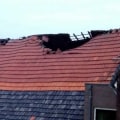The mulch layer will suppress weeds and turf for a period of time after mulching. However, as the material breaks down, there will be weeds that will grow. Cut Cedars Won't Grow Again. After mowing grass on trees and weeds, plant matter remains, which is also called organic mulch.
This mulch will slowly break down and deposit nutrients in the soil. Recycling these nutrients back into the soil is a great way to help with soil regrowth and restoration by improving soil condition. The mulch produced from our forest mulching process will break down in 2 to 10 seasons, depending on the type of wood, the amount of mulch and the soil conditions. Typically, you'll see small native plants growing within a week or two (depending on the season) after the process is complete.
In some cases, it's not uncommon to see native plant growth cover all the ground in 1 year. This growth is the native species of returning grasses and plants. This is a very good thing, since plant life will also help increase soil stability, consume mulch, and provide cover for insects, worms, etc. To aid in the decomposition process.
New growth is easily managed by traditional cutting or by placing some herbivorous animals in space. Animal trafficking or the movement of their hooves removes mulch into the soil and its waste adds seeds and nutrients to the soil. Overseeding or hydroseeding will help provide even faster plant growth. The mulch produced will also add much-needed organic matter and nutrients to increase overall soil health.
The mulch layer will help retain moisture in the soil and help increase the rate of decay of deeper (underground) root matter left after mulching. Even mulch with high levels of acidity (such as pine and cedar) can provide considerable health benefits and tilt the topsoil. Mulch is a natural fertilizer, unlike artificial fertilizers, which can contain harsh chemicals, making mulch a better source for replenishing and revitalizing soil. Traditional methods of clearing land with bulldozers and excavators strip the topsoil of this natural resource, leaving it barren and requiring years to revitalize the soil to a healthy level.
Expert forest mulching companies provide, like ours, a more efficient method to remove vegetation debris after a brushcutting project. Weeds, trees, and grasses become mulch on site instead of dragging down fallen trees and branches. Forest mulch is generally used to clean and manage vegetation in a wooded area, control the spread of invasive species, and restore wildlife health. Hoosier Land Clearing Service, LLC is one such company that uses compact track loaders with forestry grinding heads to grind unsightly vegetation, shrubs, trees, and stumps.
Owning heavy-duty machinery capable of shredding a tree up to 24 inches in diameter and performing land clearing tasks for residential and commercial customers, Texwin Forestry Mulching. With the help of an experienced forest mulching team, you can turn decaying logs and stumps, unwanted weeds, and other overgrowths into a restorative and nutritious layer on top of the soil. Then, you will have rich, already decayed mulch around your trees and shrubs and in your garden. Mulching also helps control vegetation growth in forests according to the needs of the animal species that inhabit the area.
Proactive mulching reduces stress on trees from overcrowding, improving their natural defenses against attacks by these harmful species. Forest mulch converts excess vegetation in an area such as bushes, trees, short herbaceous foliage and heavy branches into a natural and environmentally friendly topcoat of ground cover. This allows them to mulch in a controlled and selective manner with minimal soil disturbance and without uprooting trees. With the largest possible forest shredding machines, the process is effective only when the land is home to less than 25 tons of vegetation or 100 trees per acre.
And then take a bag of Kentucky 31 and add it to this area and the grass will grow because of all the moisture in the mulched wood. Commonly known as mulching, the process eliminates the need for multiple machines, such as bulldozers, excavators, tree shears, wood chippers, shredders, and haulage equipment. Traditional methods of clearing land pose significant risks of soil erosion by pushing trees, uprooting stumps and roots, and disturbing the soil. Native or seeded grasses will grow on top of mulched stumps, as the mulch mixes with the topsoil, providing an environment rich in moisture and nutrients to encourage growth.
. .



